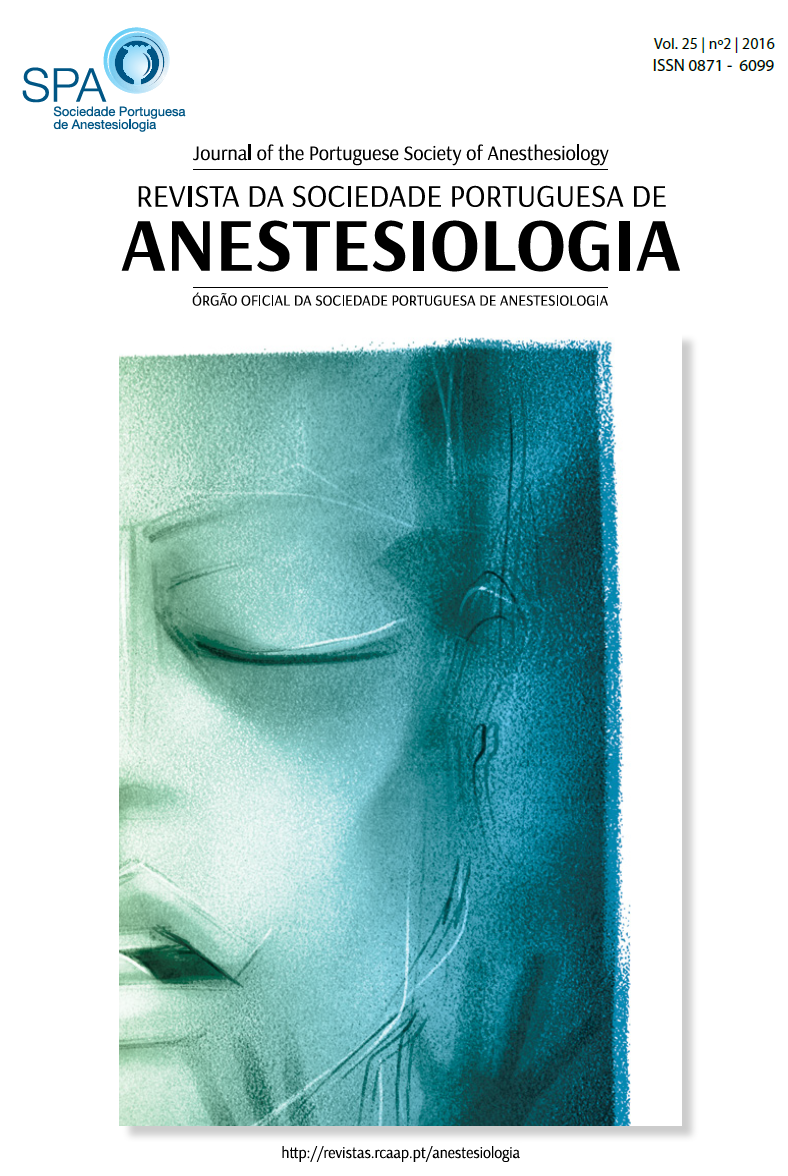POSSUM and P-POSSUM: Predictors for Radical Cystectomy Mortality and Morbidity Risk
DOI:
https://doi.org/10.25751/rspa.6694Keywords:
Cystectomy, Mortality, Morbidity, Postoperative ComplicationsAbstract
Introduction: POSSUM (Physiological and Operative Severity Score for the enUmeration of Mortality and morbidity) and P-POSSUM (Porthmouth–POSSUM) estimate a patient’s mortality and morbidity based on physiological and surgical parameters, within 30 days of surgery.The present study aims to evaluate the predictive ability of the risk of morbidity and mortality calculated by POSSUM and P-POSSUM scores at 30 days after surgery, in patients undergoing radical cystectomy.
Material and Methods: Prospectively collected physiological, surgical parameters and 30-day morbidity and mortality in patients undergoing radical cystectomy, in our hospital, since January 2013 to August 2014. Equations of POSSUM and P-POSSUM were applied to calculate the expected morbidity and mortality for each patient. Patients were stratified into 4 morbidity and 3 mortality risk groups based on the scores. For each group, expected morbidity and mortality was calculated as well as observed-to-expected morbidity and mortality ratio. POSSUM and P-POSSUM predictive ability was assessed applying the binomial test for each group and the qui-square test for the entire sample. A value of p < 0.05 was considered significant.
Results: The patients recruited were 29, 89.7% male, 68±13 years. Observed morbidity and mortality versus estimated risk at 30 days after surgery were 62% vs 52.1% and 10.3% vs 7.7% (POSSUM) and 4.5% (P-POSSUM), respectively. There were no statistically significant differences between observed and estimated morbidity and mortality for each group.
Discussion and Conclusions: In our sample, P-POSSUM was a good predictor of morbidity and mortality at 30 days after radical cystectomy. POSSUM mortality was higher than the one obtained by P-POSSUM.
Downloads
Downloads
Published
How to Cite
Issue
Section
License
Articles are freely available to be read, downloaded and shared from the time of publication.
The RSPA reserves the right to commercialize the article as an integral part of the journal (in the preparation of reprints, for example). The author should accompany the submission letter with a declaration of copyright transfer for commercial purposes.
Articles are published under the terms of the Creative Commons Attribution Non-Commercial License (CC BY-NC).
After publication in RSPA, authors are allowed to make their articles available in repositories of their home institutions, as long as they always mention where they were published.


